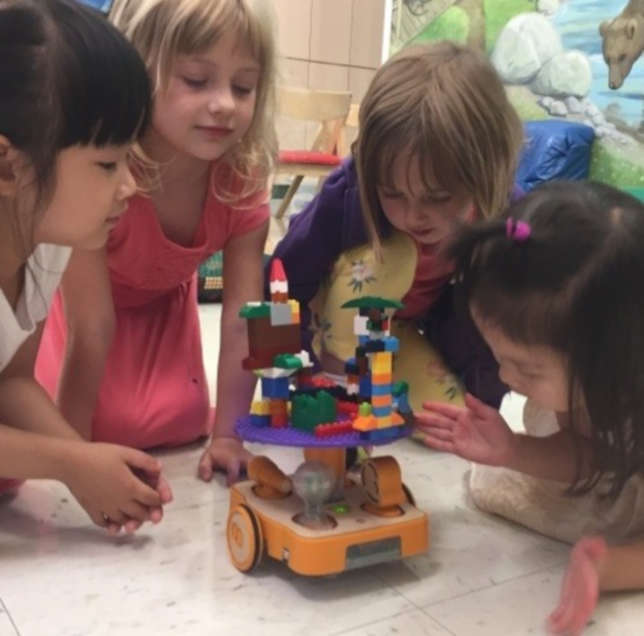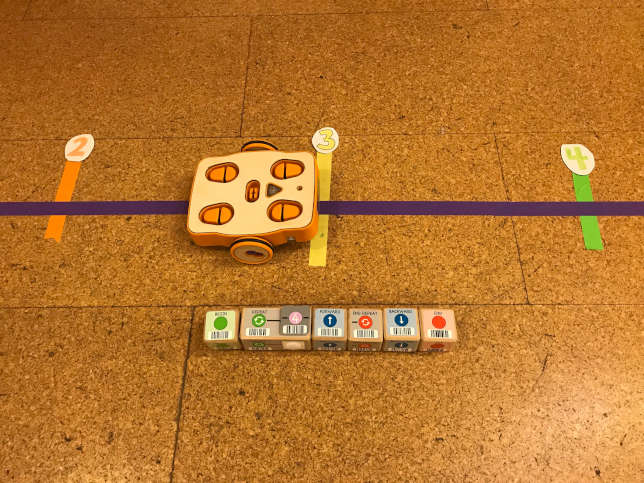Robotics Connects Young Learners to Core Curriculum and Each Other
Collaborative lessons help teachers accelerate learning for all students in math, literacy, and SEL.
Teachers
this year are
welcoming students with a wider than usual range of academic
progress, even in the earliest grades. While some K–3 students are
weeks or months behind grade-level expectations due to lost
schooling, others are ahead because they thrived during remote
learning. In this unique year, districts need resources to reach all
students where they are. At the same time, teachers
looking to work as efficiently as possible need tools and techniques
that connect to multiple core subjects and build community among kids
who have returned to in-person learning (or are experiencing it for
the first time).
Engaging
robotics activities that reinforce core subjects like math and
literacy by using collaborative learning strategies can help teachers
reach all of their students—but first teachers must be comfortable
with the robots and coding concepts themselves. Early childhood
teachers seldom have experience with computer science, and many
districts don't have instructional technology specialists, so robots
based on longstanding best practices in early childhood education are
a smart place to start. And because today’s teachers are more
time-starved than ever, in-depth, in-person PD that doesn’t take up
a great deal of teachers’ time is essential to lay the groundwork
for lessons that accelerate learning not only in computer science,
but in math, literacy, and SEL as well. Here are some examples of how
early education teachers can use robotics to make the most of their
instructional time.
Introducing
Students to School and Each Other
My
suggested activities below are all based on the KIBO
robot,
but other robots can work similarly. For example, students can
program their robot to greet every student in the class by flashing a
light when kids clap the syllables of each student’s name. This
activity builds not only community, but literacy, rhythm and music
skills as well. Encouraging the students to recognize and greet each
other by name helps build a community through social-emotional skills
practice.
Students
can also use robots with sound recorders to capture and share short
audio clips, such as a message to new students sharing their favorite
things about the school. They can then program the robot to maneuver
to another area of the class and deliver their message to a student
or teacher.
Inspiring
Collaboration
Some
of this year’s kindergarteners or even first graders may have never
experienced in-person school before. Once they’ve been introduced
to their classrooms, they need to learn basic collaboration skills
such as how to work in small groups and share materials. One
effective way to do this is to form small groups that include one
robot for every two or three students. Kids are naturally excited to
get their hands on robots, so small-group work teaches them the
patience and self-control that go into sharing.

From
there, teachers can assign specific roles to members of the group.
For example:
-
The
Robot Wrangler is responsible for building the robot.
-
The
Programmer is responsible for creating the program that guides what
the robot does.
-
The
Checker verifies that the robot has been built and programmed
correctly.
-
The
Designer decorates the robot to turn it into a character such as a
hero from a story book.
A
best practice is to have students rotate through the roles from
lesson to lesson so they get a variety of experiences with the
Engineering Design Process.
Teachers
can also use collaborative learning strategies such as “expert
groups” to allow children to build and share expertise in roles.
Peer mentoring or working with children from older grades helps
manage the challenges of supporting children who are returning to
school at very different academic stages after the pandemic, and may
need extra support in math or literacy.
Math:
The Physical Number Line
To
create a “Robot Number Line,” students program their robot to
travel along a physical number line to model counting, addition, and
subtraction. The physical representation makes the math concepts more
accessible to young students.

Teachers
can also scale this activity to different academic levels by changing
the math operations that students practice. Number lines can
represent not only counting, but also addition and subtraction, as
well as simple multiplication.
Literacy:
A Tale Told by a Robot
With
“Robot Storytelling,” students reenact a scene from a storybook
that they are using in the classroom. Decorating their robot as the
main character and building the setting with blocks, cardboard, and
arts and craft materials engages core ELA standards in literature
through imaginative play. Programming their robotic character to act
out the plot develops children’s sequencing skills, which are a
foundation of both programming and literacy.
These
are just a few ways that collaborative robotic lessons can unite an
academically or behaviorally diverse classroom. As this challenging
school year continues, building a learning community where students
are comfortable and teachers can make the most of their time will
depend on deploying tech tools that are easily adaptable for teachers
and engaging for students.
About the Author
Jason Innes is the director of curriculum, training, and product management for KinderLab Robotics. He can be reached at [email protected].